AP Bio Unit 5 Koehler
G0: Cell cycle arrest (cells that do not undergo mitosis: neurons)
G1: Cellular organs are duplicated
S: 46 chromosomes are duplicated (DNA synthesis)
G2: Preparation for mitosis (Centriole growth)
Mitosis: PMAT
Cytokinesis: Actual splitting of the cell
The structure of the chromosome - where are the chromatids, the centromere, etc.
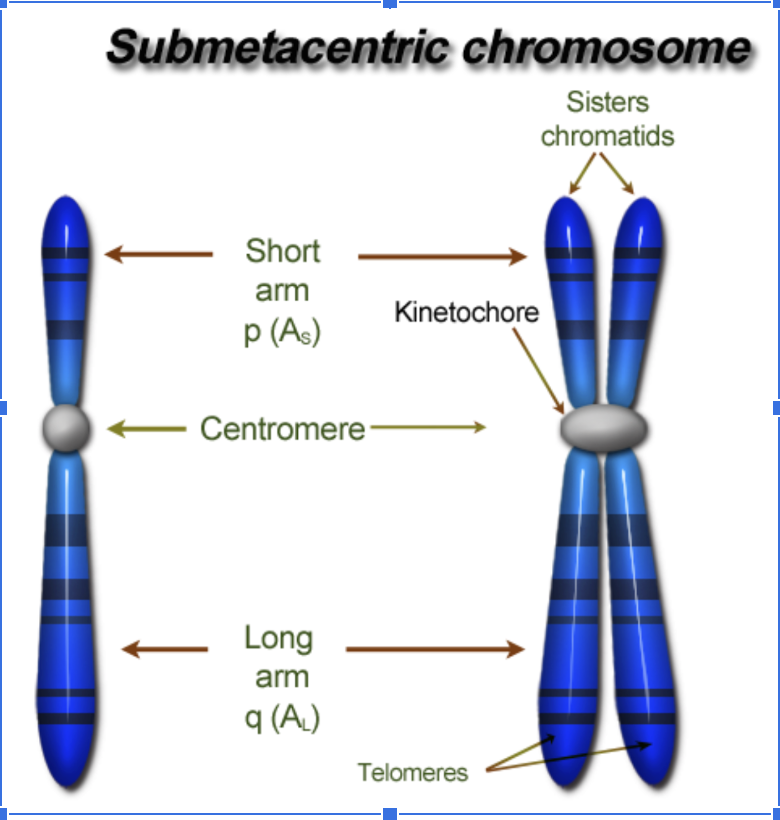
Phases of mitosis and what occurs in each phase
Prophase: Chromosomes condense and become visible, spindle fibers emerge from the centrosomes, the nuclear envelope breaks down and the nucleolus becomes visible
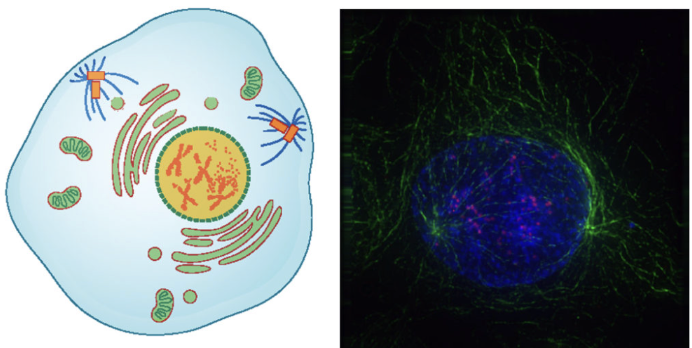
Prometaphase: Chromosomes continue to condense, kinetochores appear at the centromeres, microtubules attach to the kinetochores, and the centrosomes move towards opposite poles
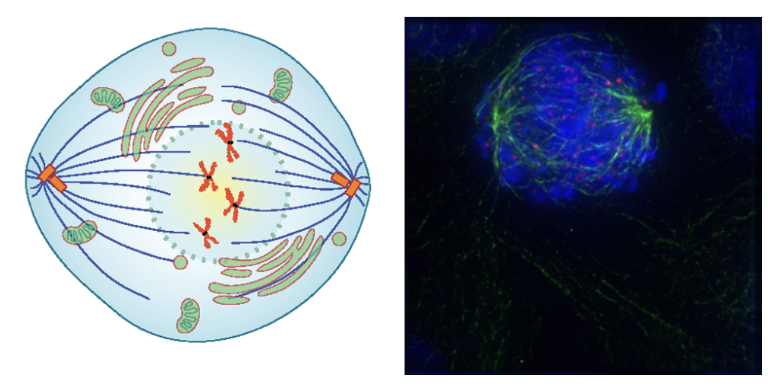
Metaphase: Mitotic spindle is fully developed, centrosomes are at opposite poles of the cell, the chromosomes line up at the metaphase plate, each sister chromatid is attached to a spindle fiber
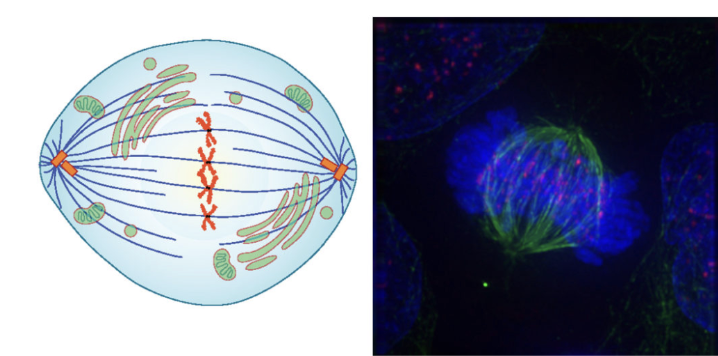
Anaphase: The cohesin proteins binding the sister chromatids break down, and the sister chromatids (chromosomes) are pulled towards opposite poles. Non-kinetochore spindle fibers lengthen, elongating the cell
Telophase: Chromosomes are at opposite poles and begin to decondense, the mitotic spindle breaks down, and nuclear envelope material surrounds each set of chromosomes
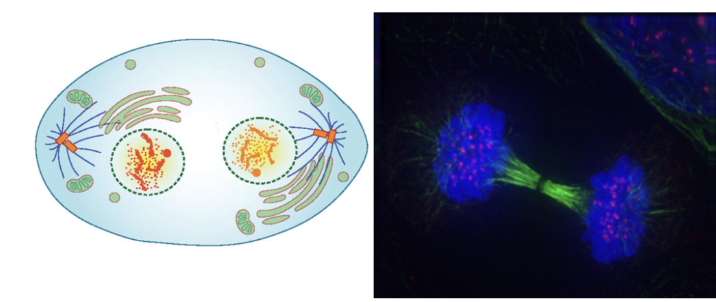
The general mechanism of binary fission, and what organisms it occurs in
Binary fission occurs in prokaryotes and some single-celled eukaryotes that undergo asexual reproduction
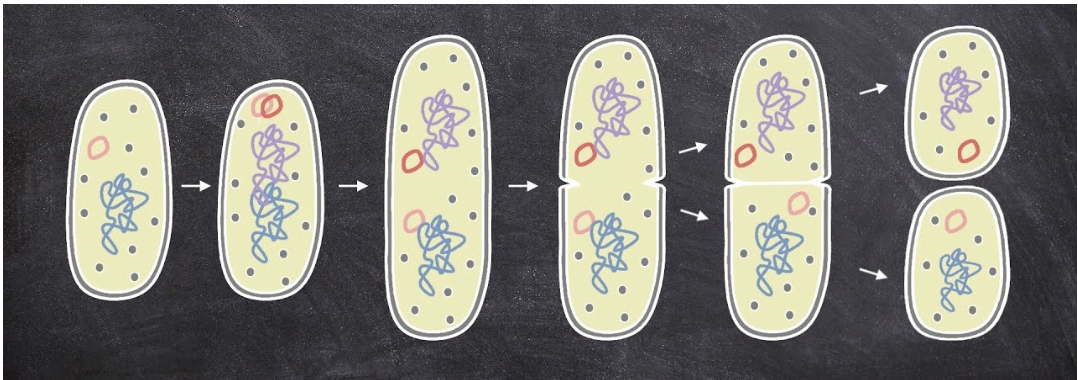
Relationship between cancer cells and mitosis
If a DNA mutation occurs in the cell and it is not caught at the checkpoint or during mitosis, the cell will keep replicating until there are clumps of mutated cells
This creates a tumor and cancerous cells in the body
How cytokinesis differs in animals vs. plant cells
Plant Cells | Animal Cells |
|
|

Checkpoints of the cell cycle
After G1: Enough nutrients, proper cell growth
After G2: DNA mutations, proper replication
After Mitosis: Chromosomes attached to spindle, chromatids evenly separated
The fate of specialized cells and non-dividing cells in regards to the cell cycle
Non-dividing cells: Enter G0 phase of the cell cycle and do not replicate DNA/organelles
Specialized cells: Undergo differential gene expression
Stimulus switches off certain genes in an unspecialized cell
Transcription and translation occur until all the genes in the cell are encoded to produce different proteins
Meiosis and Sexual Life Cycles (Ch. 10)
Asexual vs. sexual reproduction
Asexual reproduction only requires one parent, sexual reproduction requires two
Asexual: Binary fission (prokaryotes), budding (coral), fragmentation/regeneration (planarians), parthenogenesis
Sexual: Spermatogenesis + Oogenesis
Relationship between homologous chromosomes, sister chromosomes, and their locations on a karyotype
Homologous Chromosomes: Pair of chromosomes that contain the same genes, but potentially different alleles for the genes
Sister Chromatids: Set of duplicated chromatids ( | + | = X)
Karyotype: Each person has 23 homologous pairs of chromosomes and 46 chromosomes
Each chromosome in each pair comes from one parent and the other from the other parent
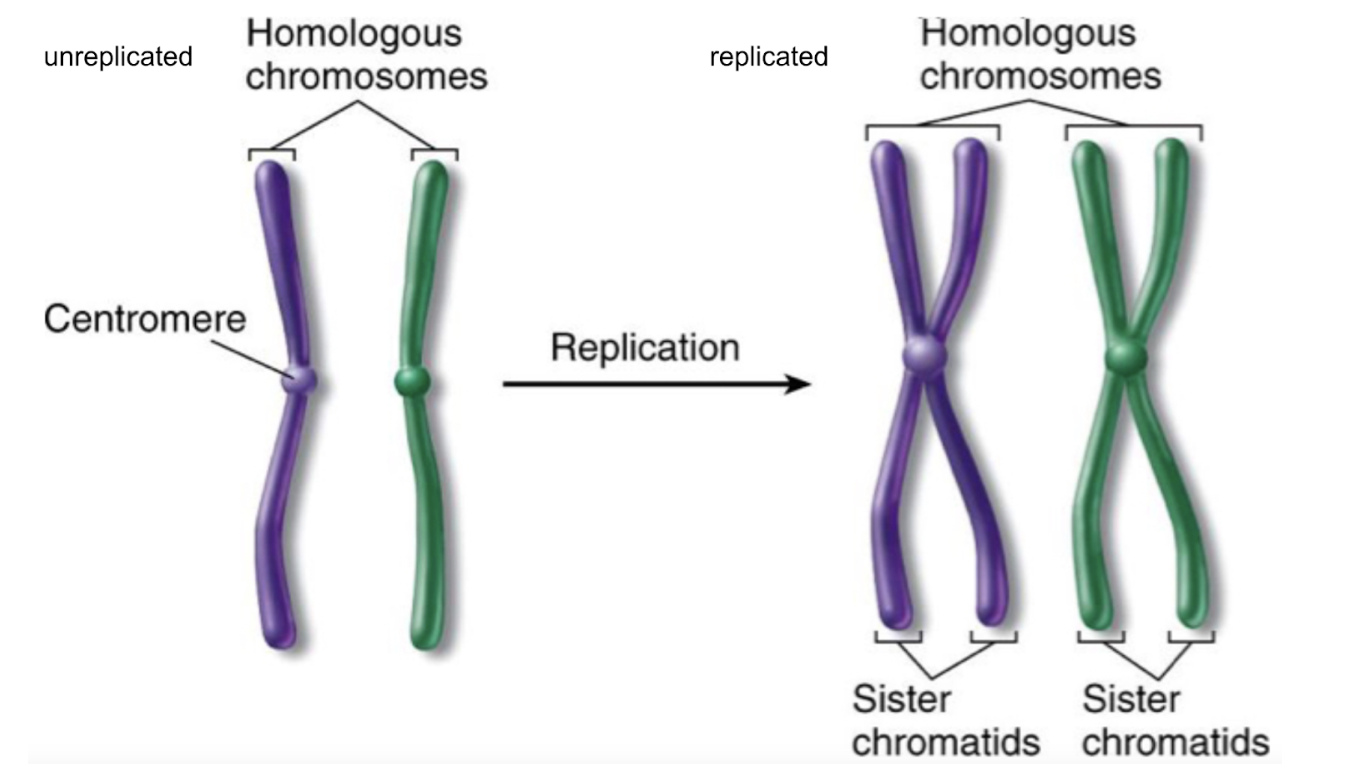
Difference between haploid and diploid cells
Haploid (N): Cells do not have full set of chromosomes
Diploid (2N): Cells have full set of chromosomes (homologous chromosomes are with their pairs)
The phases of meiosis and what occurs in each stage
Prophase I: Chromosomes are with their homologous pair, nuclear envelope dissolves, spindle grows from centrosomes (CROSSING OVER)
Metaphase I: Homologous pairs line up in the center, microtubules attach to kinetochores
Anaphase I: Homologous pairs are pulled apart
Telophase I: Cleavage furrow appears and cell pinches together
Cytokinesis: Cell separates into two haploid cells
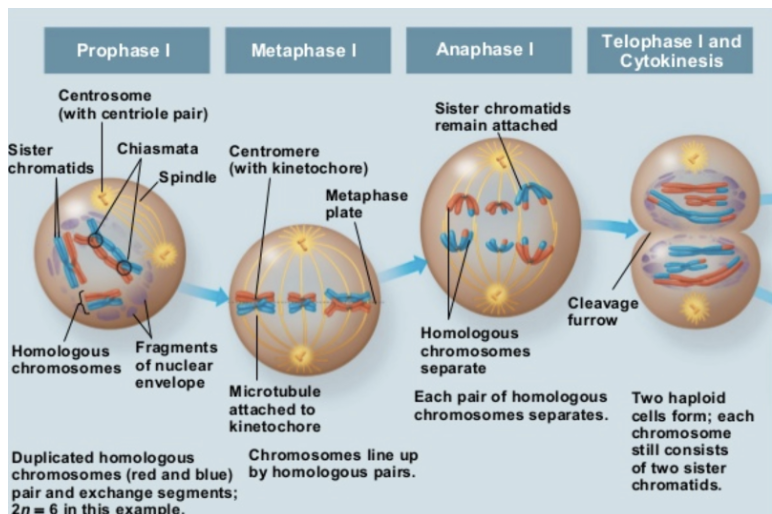
PMAT II: Same as mitosis, except all cells are unique due to crossing over
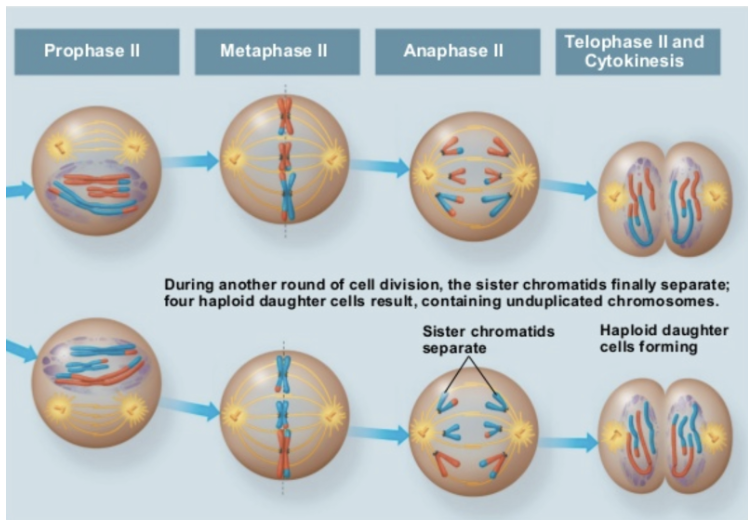
Comparisons between mitosis and meiosis
Mitosis | Meiosis |
|
|
|
|
|
|
|
|
How independent assortment, crossing over, and random fertilization create genetic diversity
Independent Assortment: Different genes independently separate from one another when reproductive cells develop AKA an allele that a gamete receives for one gene does not affect the allele received by another for another gene
Crossing Over: Creates genetic variation in the alleles received by the daughter cells
Random Fertilization: Any random combination of genes from each parent cell
Difference between gametes and somatic cells
Gametes: Sex cells
Somatic: Body cells
Reproduction and Development (Ch. 36)
Adaptations other animals have for fertilization, such as parthenogenesis and external fertilization
Parthenogenesis: Non-mammalian females undergo parthenogenesis to produce all male offspring
Komodo dragon females give eggs half of the necessary chromosomes but somehow they end up with a full set of DNA (??)
External Fertilization: Aquatic females, for example, lay eggs and then various males fertilize them (frogs??)
The processes of gametogenesis, such as spermatogenesis and oogenesis
Spermatogenesis: Same as meiosis, produces 4 sperm cells
Oogenesis: Same as meiosis, produces 1 egg and 3 polar bodies
Before puberty: Oocyte stopped during prophase I
Puberty → Menopause: Primary oocyte splits into polar body (that splits into 2 polar bodies) and secondary oocyte
Meiosis II is completed only when fertilized, secondary oocyte splits into ovum third polar body
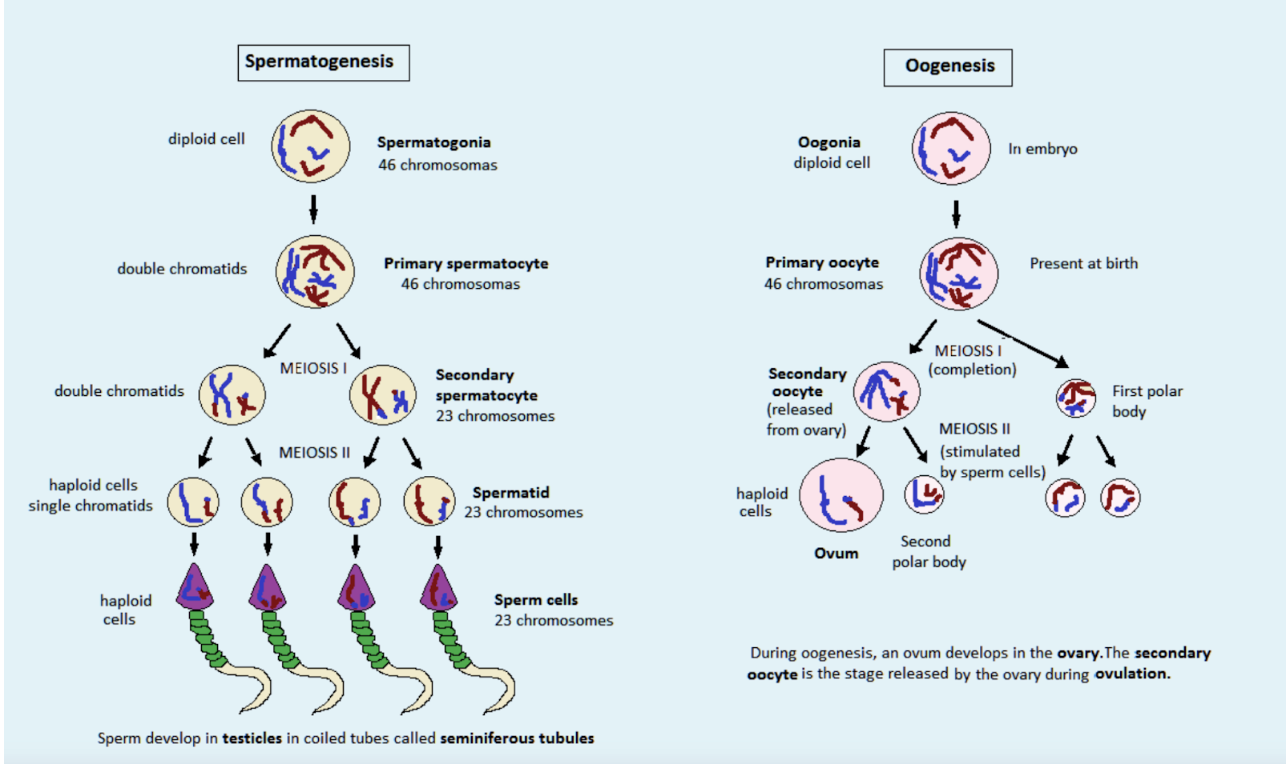
Embryonic development from fertilization, including cleavage and gastrulation
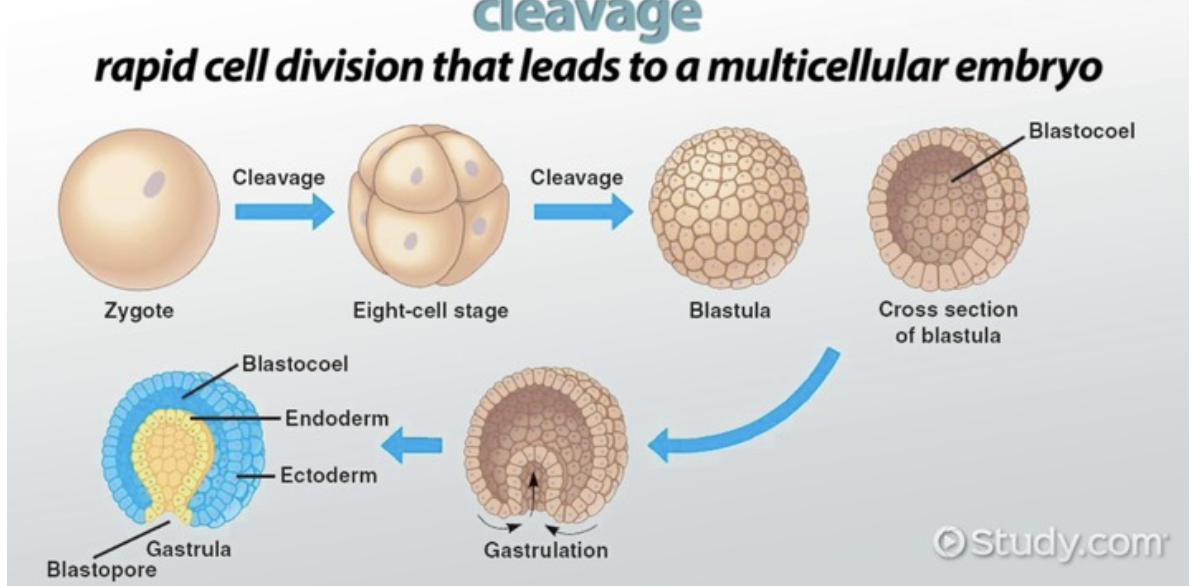
Cell Signaling (5.6)
The four types of cell signaling
Autocrine: Cell signalling itself
Paracrine: Nearby cells
Endocrine: Long-distance (different areas of the body)
Juxtacrine: Touching cells
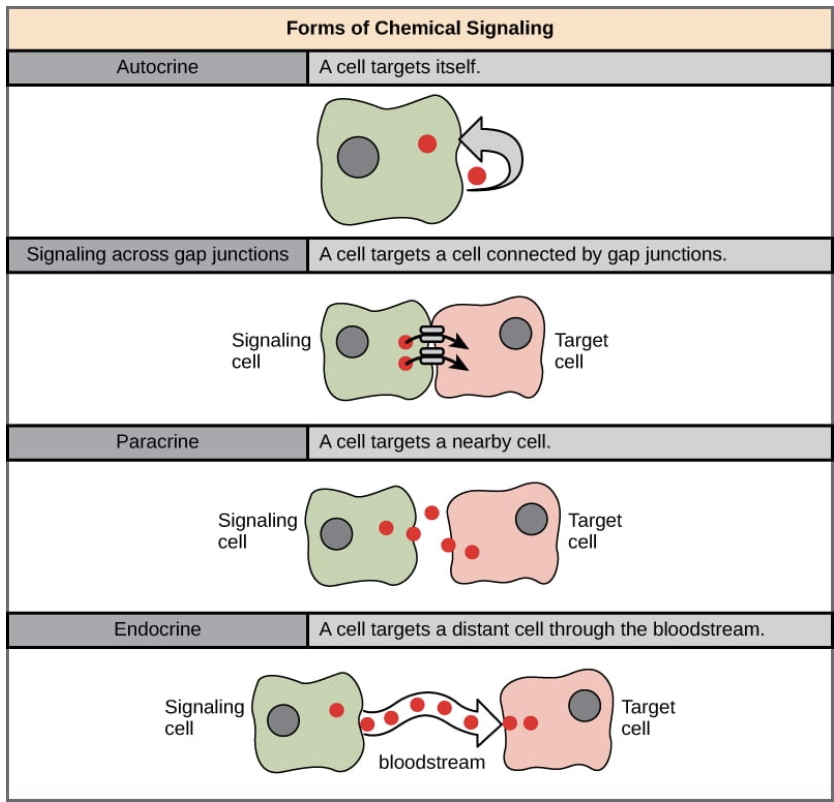
The three stages of cell signaling
Reception: Ligand binds to the receptor (intracellular or extracellular)
Intracellular ligands: Nonpolar
Extracellular ligand: Polar

Transduction: Series of steps that relays signal from ligand to nucleus (phosphorylation cascades, amplification, or secondary messengers)
Phosphorylation Cascade: When a protein is phosphorylated, it is activated → when phosphate group is removed, it is inactive
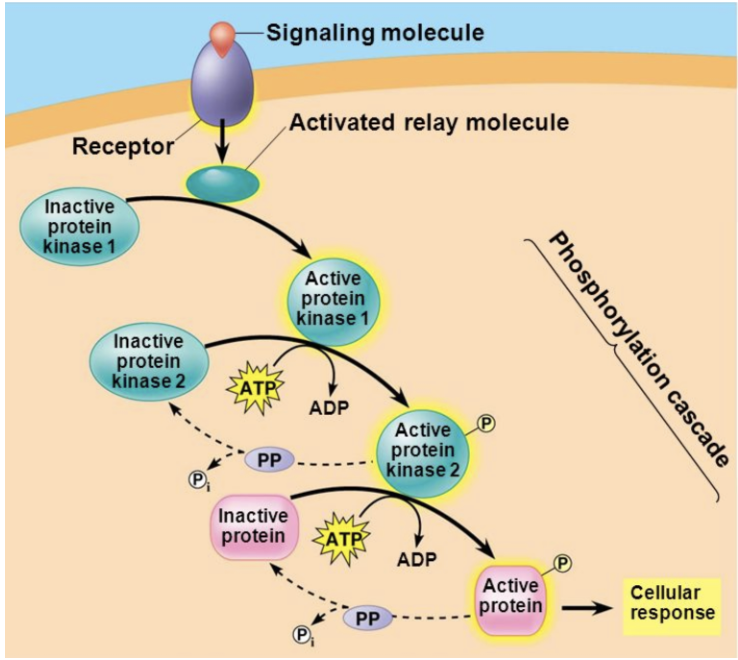
Amplification: Allows multiple responses from one ligand
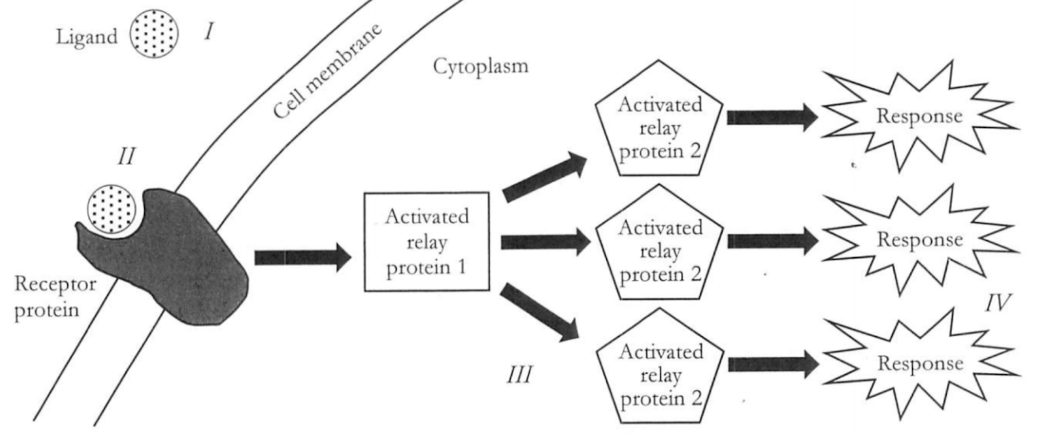
Secondary Messengers: Offer a second (similar but not the same) pathway
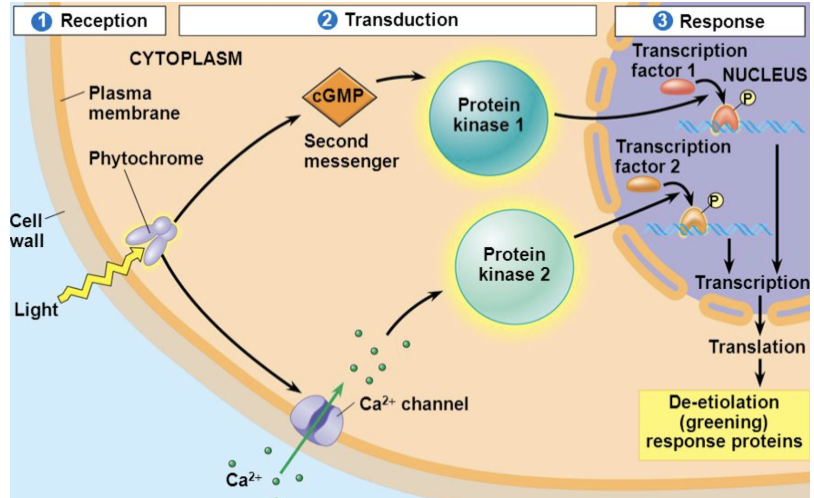
Response: Takes place in the nucleus and involves transcription and translation. (turning off/on genes)
How signal transduction pathways differ in single-celled organisms vs. multicellular organisms:
Examples of cell signaling in context, such as in the immune and nervous systems